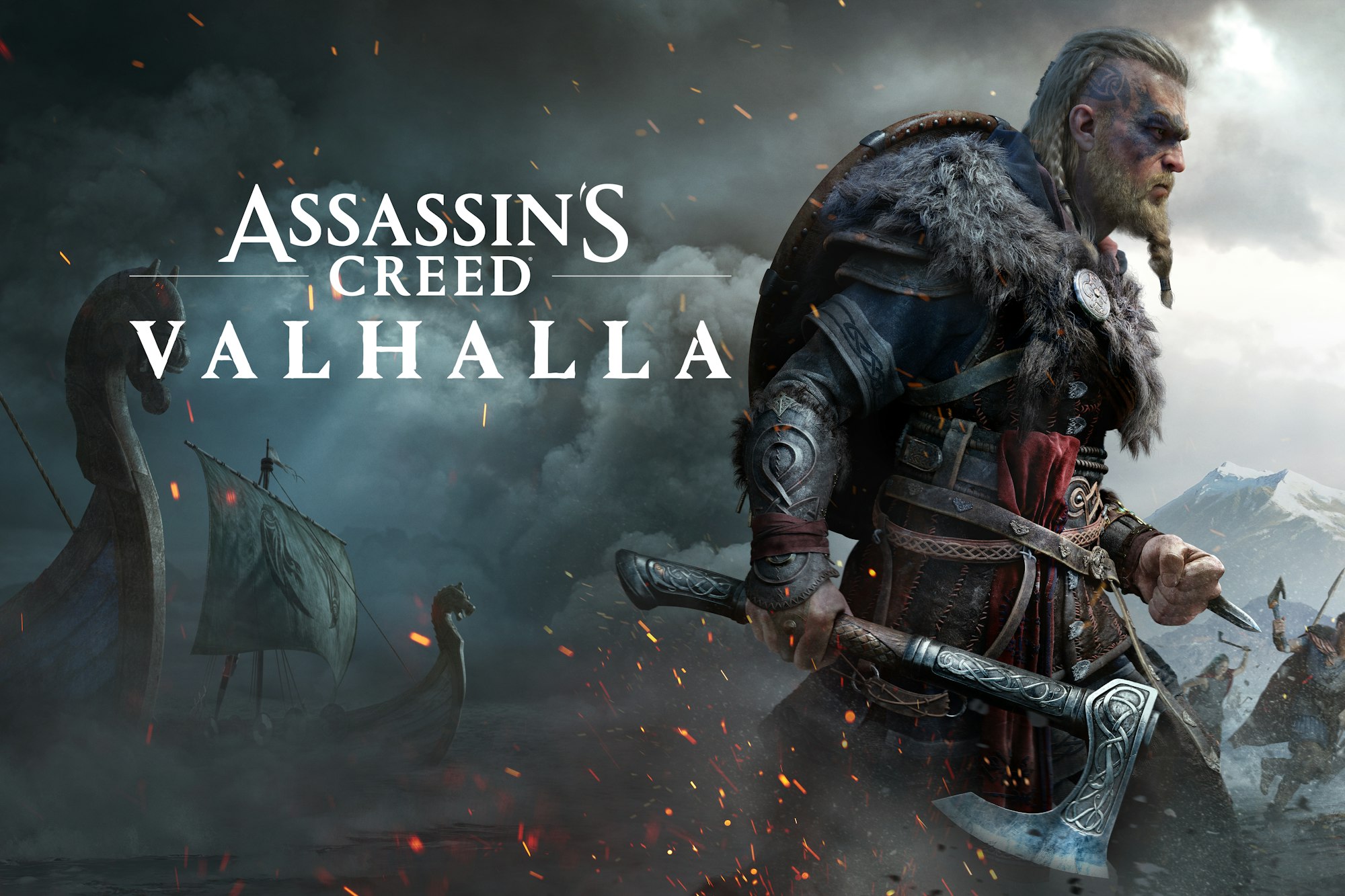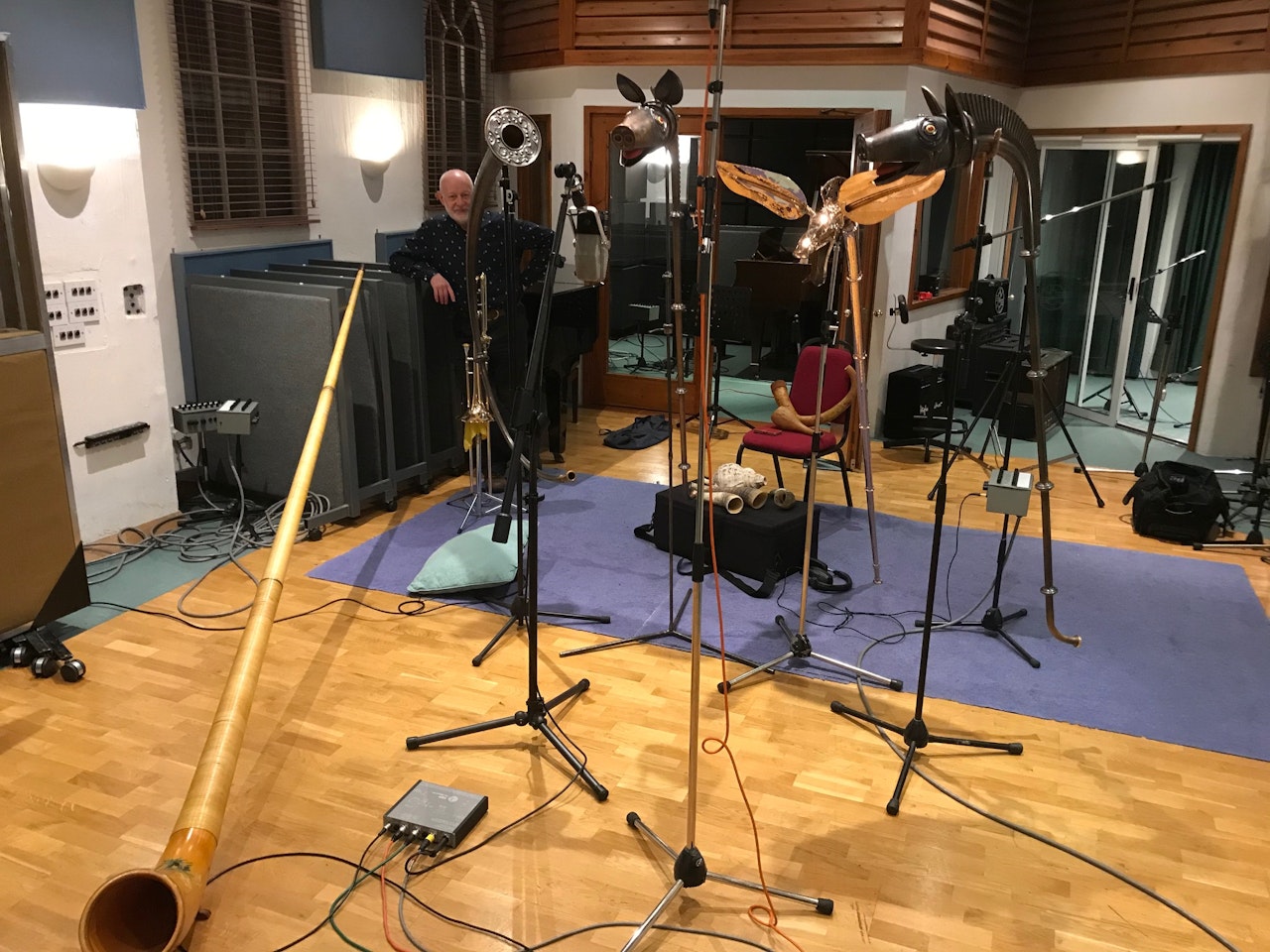Words by Amon Warmann
The Assassin’s Creed franchise has an impressive history of talented composers and memorable music. One member of its distinguished alumni is Sarah Schachner: in addition to co-composing Assassin’s Creed: Unity, she wrote the score for 2017’s Assassin’s Creed Origins. Now she’s back at it again for the latest entry in the ever-popular franchise – this time with the series’ first ever composer, Jesper Kyd. We asked her about incorporating Norwegian music into the score, the sequence she was most excited to score, and more.

What excited you about coming to work on Assasin's Creed: Valhalla?
First and foremost the time period and setting. I’ve always wanted Assassin’s Creed to cover the Viking age because that clashing and merging of Norse and Anglo-Saxon culture is really fascinating. I grew up pillaging and plundering in my backyard on a full-sized Viking ship replica from the Leif Erikson society, so you could say I’ve been ready for this project for a long time. I’m also a big fan of Scandinavian and Pagan folk music so I was thrilled to get to draw from those influences for the score.
The Assassin’s Creed scores are great at mixing the music of the period in which they’re set with modern instruments. You’ve done this with French music in Unity and you imagined a whole new soundscape for Origins. In what ways did incorporating Norwegian music into AC: Valhalla challenge you?
Each Assassin’s Creed is an excuse to add to my growing collection of regional and rare folk instruments. I got a bass and alto tagelharpa, an Anglo-Saxon lyre, various horse haired string instruments and some animal hide drums. The tagelharpa is harmonically limited and not easy to play which was a bit challenging to work with. I was continuously trying to find new ways to write for it to keep the score from feeling too repetitive. When working in such a big open-world, there has to be a lot of sonic variety while still feeling cohesive.
I also incorporated some very interesting ancient brass instruments. The main horn featured across the score is called the Carnyx, an ancient Celtic war horn from thousands of years ago. I recorded a bunch of source material with instrumentalist and professor John Kenny, in Scotland. He’s one of the few people in the world who has a reconstruction of the instrument and can actually play it. It’s essentially an elongated brass trumpet with a wild boar’s head on one end. It has a very unusual harmonic series and otherworldly tone that I fell in love with right away. We did a remote 12-hour session over Zoom and AudioMovers, and it was awesome!
I’m not a purist at all when it comes to audio and I pitch, resample, and mangle things all the time.
When you come to begin your initial ideas for a score, where do you start?
I like to start with broad strokes exploring the textural possibilities of the instruments, and experimenting with production ideas that can help shape a unique identity for the score. In the beginning, I’m looking for distinctive sounds that have a lot of character and convey the right emotion. If I’ve found an unusual instrument or performer I want to work with, I like to do a recording session to gather source material to have at my disposal to mangle, resample and process throughout the score as I’m composing. That usually means experimenting with textures, rhythms, and musical gestures that I can use in many different contexts. Those early experiments often evolve over time and become a core identity for the score.
For the Viking angle, I wanted to use wild, raw, and untamed sounds to contrast with the more controlled temperament of the Anglo-Saxon instruments and religious influences. From there, I start thinking about melodic themes and harmonic language to set the right tone for the project. Sound design and composing blur together for me into one fluid, non-linear process.
Once you record your instruments, can you share how you like to process and adapt the recordings to fit the world that you're composing for?
I love the spontaneity of improvisation so I’ll often record a bunch of loose passes on an instrument until I have an inspiring performance that I can build off of. I’m then thinking about what emotion I’m trying to convey with each element and what processing might help achieve that. Many of the organic sounds I record are run through external fx units like the Elektron Analog Heat for saturation and grit, or the Strymon Big Sky for ambience. Analog synths have a warmth and unpredictability to them that blends so well with organic and acoustic sounds.
I’m not a purist at all when it comes to audio and I pitch, resample, and mangle things all the time to create something new. There’s a track on the Valhalla OST called, Wave Walker, that starts out with the ancient carnyx horn in its natural pure form. Additional octaves and distortion layers start coming in until it’s tripled up in 3 octaves, way below its realistic range. Later on in the piece, that same Carnyx audio is heard re-synthesized through a vocoder plugin and played melodically like a monosynth in a much higher frequency range. You still get the essence and texture of the original sound, but it’s been transformed into something completely new.
Was there any particular sequence in AC: Valhalla that you were excited to score?
I absolutely love composing the reach high point synchronisation cues in Assassin’s Creed. Not only are they always visually beautiful scenes, but it’s really fun to compose a musical reward for the player who has taken the time to explore and climb up a large building or structure. When they get to the top, the music acts as a reminder to take a breath, be present, and appreciate the beauty in the world.
I also can’t not mention the Asgard dreamworld sequences. I had so much fun working with the Carnyx and creating a unique sound for that mythical realm. There’s the famous rainbow bridge, beautiful towers and misty caves, and I wanted to bring a little bit of extra fantasy and drama to that part of the game.
Where did you mostly work on your ideas? Do you have a home studio and if so what does that look like?
I work out of my home studio and playing live instruments and overdubbing myself is a big part of my process. The room has a high, angled wooden ceiling so I can track a lot on my own in here. I have tons of acoustic string instruments that I’m quickly switching between on any given day and they are precariously scattered all around. To the right of my desk, I have an upright piano and a synth area. Right now, I have my Eurorack modular set up, some mono and polysynths on a tiered stand, and a few unique standalone synths like the SOMA LYRA-8 drone synth and the Moog DFAM within reach for quick inspiration.
You worked on the theme for Valhalla with Jesper. What were your early conversations like when you first began working on this together?
Jesper and I had never worked together before. It was an unusual situation to be asked to co-write a main theme when there wasn’t an existing collaborative relationship between us, but I love how our ideas came together creating something unique and different from anything we would have done totally on our own.
Jesper came up with an initial vibe and melodic motif that was a great starting point for the theme, tapping into Eivor’s emotional journey. I took it from there, expanding on the melody and structure, and produced it out into a full arrangement. In the main melody, Jesper’s motif had 6 notes, and I wrote a musical answer to it that also had 6 notes. It’s cool because it just naturally ended up that way.
We had both been experimenting with vocal ideas so it felt right at that point to invite Einar into the process to lend his Viking voice to the theme. When he sent me back his stems to integrate into the arrangement, he also sent an alternative lyrical version where he adapted an Old Norse poem to our melody. It was incredible and I turned that into a whole separate piece that plays at a very special moment in the game.
My creativity and the way I come up with ideas will never be a linear process or follow a formula.
How long did you spend working on this project and how much music did you create?
I started talking with Ubisoft about Valhalla almost 2 years ago. Simon Landry from Ubisoft flew out to LA and we had a lovely meal with Jesper discussing the project. It was very exciting and I always love working with the Montreal audio team. I’ve been working on Valhalla solidly for the past year and wrote just under 3 hours of music. I think that’s enough Norse music for a while!
Do you have a favourite track from the AC: Valhalla score?
I don’t know if I have one single favourite, but I’m really proud of how Asgard - Hall of the Aesir turned out. I like how the elements all came together with the Carnyx, Einar’s voice, the scraggly tagelharpa, and the rolling harmony underneath.
If you want to get super nerdy, the Carnyx is an untempered horn, so its sound comes from the natural harmonic series. Mathematically speaking, the harmonic series is the formula for nature’s laws of relationships whether it’s pitches and timbres, prime numbers, or the colours of the rainbow. So the sound of the Carnyx is like a sonic representation of the rainbow bridge in Asgard.

What good habits did you form early on in your career that still serve you well today?
I’d say the biggest one is being very disciplined about getting into the studio and trying every day even when I don’t feel inspired or creative. Being comfortable with and able to get past that initial resistance is crucial when you have really intense deadlines for long stretches of time. My creativity and the way I come up with ideas will never be a linear process or follow a formula, so the best thing I can do is just continually show up with a willingness and curiosity.
Having said that, I think most composers would agree that finding a balance with life and everything else is a big challenge. If that discipline becomes too driven by anxiety, the creative well of inspiration can become dry. I’ve learned how important it is to have some ease with it and embrace the value of stepping away and finding inspiration in other activities as well. Since the pandemic started, I’ve been taking multiple walks outside everyday and that is a small, helpful habit I will definitely continue.
What can fans of Assassin’s Creed expect from the Valhalla score?
The score combines Scandinavian Viking and Anglo-Saxon elements reimagined through a contemporary lens. Blending these authentic influences with modern synthesis and production techniques is what makes Assassin's Creed feel so unique and I had a lot of fun learning about this historical era and playing many of the Norse instruments myself.
